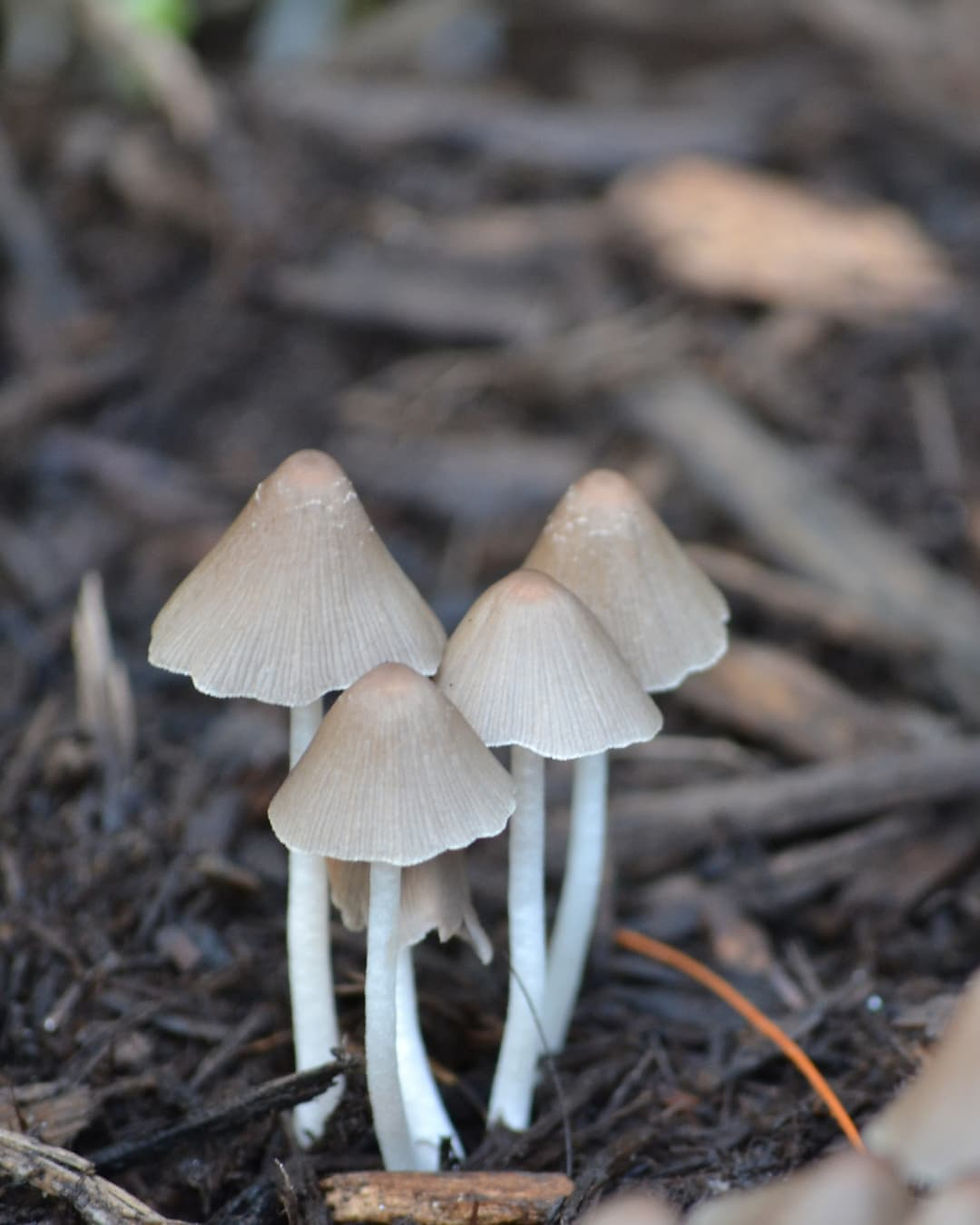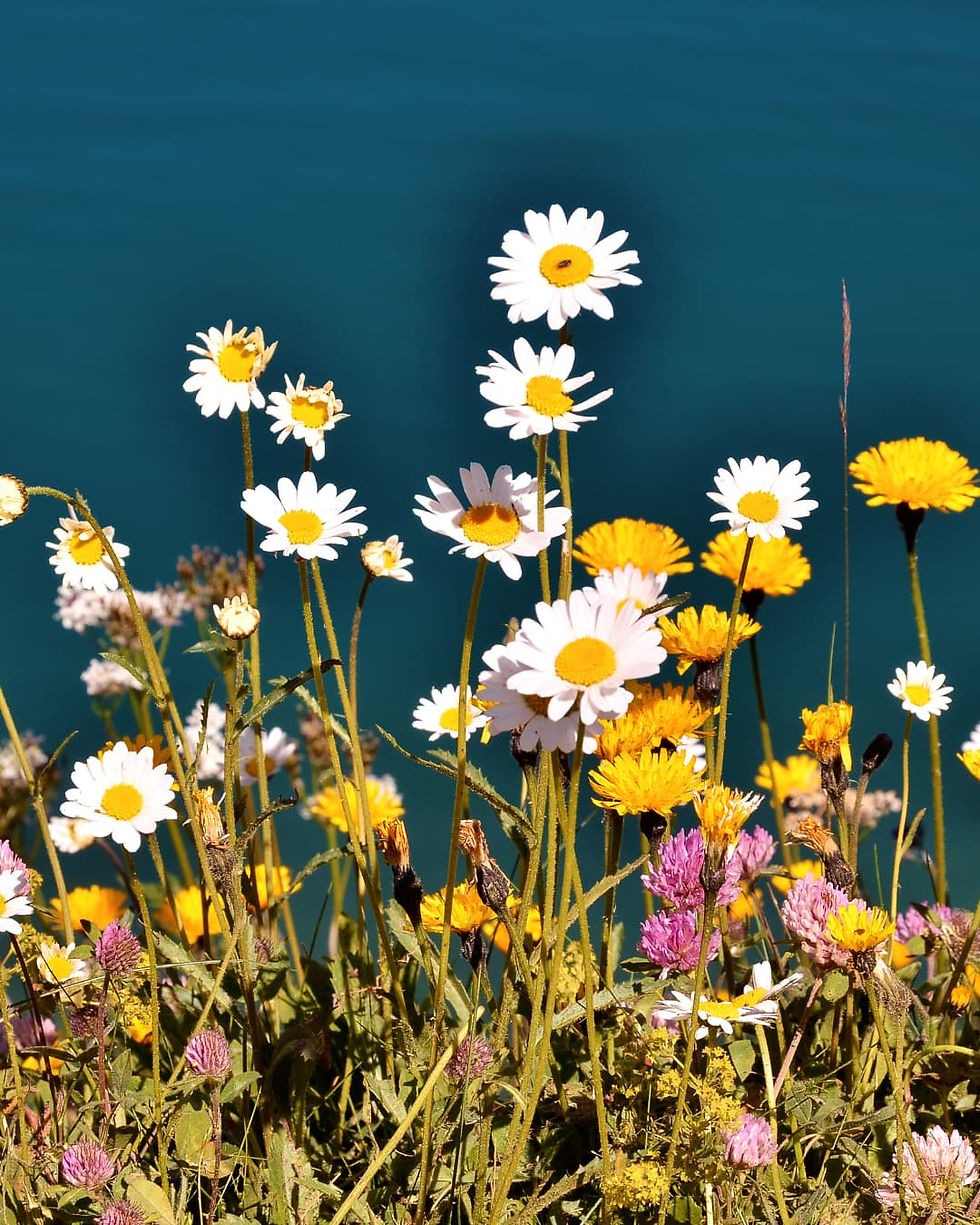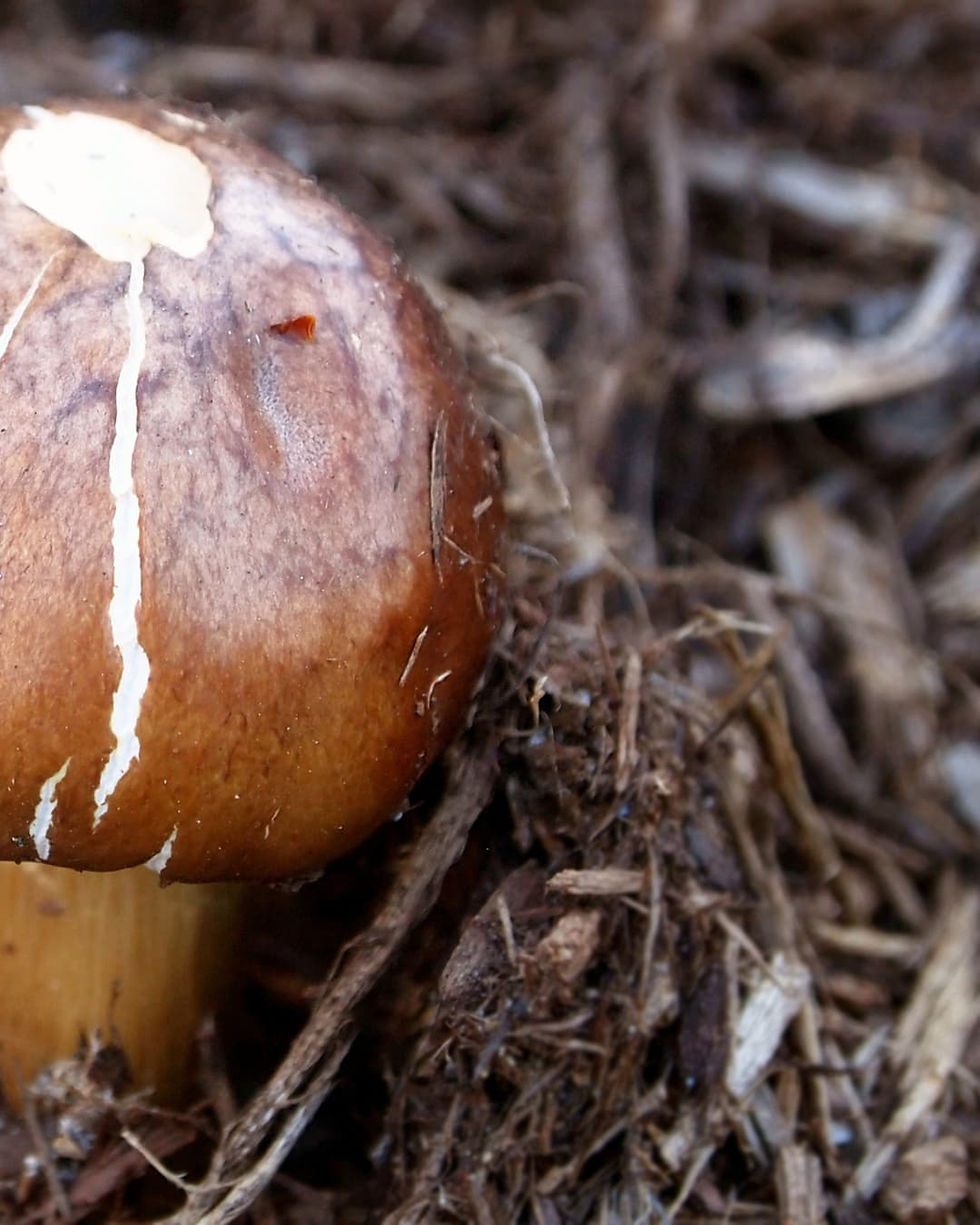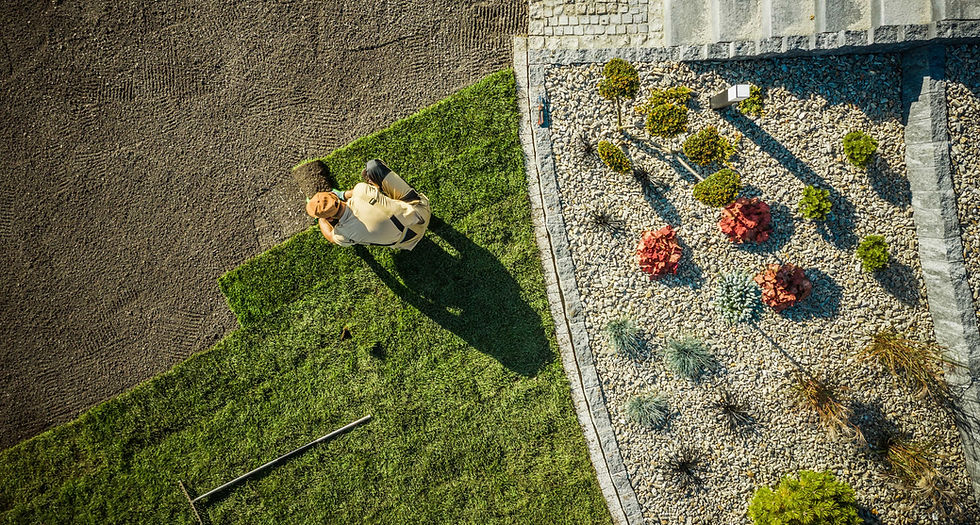Types of Fungus That Grows in Mulch: Causes and Solutions
- McKenna Hines
- Jul 14
- 10 min read

Introduction to Fungus in Mulch
Mulch is a valuable addition to gardens and landscapes, helping with moisture retention, weed suppression, and soil health. However, under certain conditions, mulch can become a breeding ground for unwanted fungi. Understanding the types of fungus that grows in mulch is key to maintaining a healthy yard.
Fungi thrive in moist, warm, and nutrient-rich environments. Since mulch naturally decomposes, it creates an ideal habitat for fungal growth. While most mulch fungi are harmless to plants, some can be unsightly or disruptive.
Recognizing the types of fungus that grows in mulch allows you to take preventative steps. It also helps you avoid confusion between harmful pathogens and beneficial organisms that aid decomposition.
This article explores the causes, identification, and control methods for the various types of fungus that grows in mulch. By knowing what to look for, you can better manage your landscape health.
Understanding the connection between mulch composition and fungi will equip you with tools to handle common garden challenges effectively.
Why Fungi Thrive in Mulch
The natural process of decomposition provides the perfect setting for fungal growth. As mulch breaks down, it releases moisture and organic matter that supports microbial and fungal life. This is one of the primary reasons why you’ll find multiple types of fungus that grows in mulch.

Moisture plays a major role. If mulch remains consistently damp—due to overwatering, poor drainage, or excessive rainfall—fungal spores are more likely to activate and spread. Shade and dense layering only amplify this effect.
Organic mulches such as wood chips, bark, and compost are particularly prone to developing fungi. These materials hold water and provide ample carbon, encouraging various types of fungus that grows in mulch.
While fungal growth is often part of the natural breakdown process, it can become problematic if it spreads excessively or causes aesthetic concerns. Understanding why fungi thrive is the first step in managing them.
With proper mulch application and maintenance, you can minimize the conditions that lead to fungal issues and maintain a visually appealing and healthy garden.
Common Types of Fungus That Grows in Mulch
Several fungal species commonly appear in mulch. One of the most recognizable types of fungus that grows in mulch is artillery fungus (Sphaerobolus). This fungus shoots tiny black spores onto nearby surfaces, leaving hard-to-clean stains.
Another is slime mold, which often appears as bright yellow, orange, or gray foamy patches. Although alarming in appearance, slime mold is harmless and usually temporary. It thrives in damp, decaying organic matter.

Mushrooms are also among the most visible types of fungus that grows in mulch. These fruiting bodies emerge after rainfall and signal active fungal colonies beneath the surface. Most are not harmful, though some may be toxic to pets or children.
Dog vomit fungus, a variety of slime mold, is another common sight. It gets its name from its yellowish, foamy appearance and often shows up after rain or excessive watering.
Recognizing these types of fungus that grows in mulch will help you respond appropriately, whether through removal, control, or simply allowing them to run their natural course.
Artillery Fungus: Sticky Spores and Their Effects
Artillery fungus, or shotgun fungus, is among the most frustrating types of fungus that grows in mulch. It propels sticky spores several feet into the air, often landing on siding, cars, and windows, where they leave permanent stains.
This fungus prefers hardwood mulch and grows best in cool, moist environments. It’s especially common in spring and fall when conditions are ideal for spore production and dispersal.
Unfortunately, once the spores land on surfaces, they are difficult to remove without damaging the material. This makes artillery fungus a nuisance in residential settings.
To manage this type of fungus that grows in mulch, experts recommend switching to pine bark or stone mulch. These materials are less favorable to artillery fungus and help limit its spread.
Early detection and mulch rotation are key strategies in reducing artillery fungus outbreaks. Understanding this specific type of fungus that grows in mulch is crucial for protecting your property.
This article titled: “What is Artillery Fungus and How to Get Rid of It,” from Beaulieu Home Improvement shares additional information about Artillery Fungus.
Slime Mold: Harmless but Unsightly
Slime mold is a strange and fascinating organism often mistaken for fungus. Though technically not a true fungus, it is included in discussions about the types of fungus that grows in mulch due to its similar behavior and appearance.

Appearing in bright colors like yellow, orange, or gray, slime mold spreads over mulch surfaces in irregular, foamy patterns. It doesn’t infect plants but feeds on bacteria and decaying organic matter.
Slime mold usually appears during warm, wet weather and can vanish within days. Despite its grotesque nickname—dog vomit fungus—it poses no harm to plants or people.
If the appearance is bothersome, simply rake it out, dry the area, or use a garden hose to break it up. No chemical treatment is necessary for this type of fungus that grows in mulch.
Its presence is often a sign of healthy microbial activity. Understanding that some types of fungus that grows in mulch are benign helps reduce unnecessary alarm.
Mushrooms and Toadstools in Mulch
Mushrooms are common in moist, shaded mulch beds. Oasis Landscape says, “ Moisture Retention: a 2–4-inch layer of mulch can reduce soil water loss to evaporation by 33%.”
As fruiting bodies of underground fungi, they indicate active decomposition and healthy soil biology. However, not all mushrooms are welcome in every garden.

Among the types of fungus that grows in mulch, mushrooms are the most easily identified. While most are harmless, it’s wise to remove any unfamiliar mushrooms to prevent pets or children from ingesting them.
These fungi usually appear after rainfall and often disappear just as quickly. Their presence signals rich microbial activity but may be unsightly in ornamental beds or high-traffic areas.
To reduce mushroom growth, improve drainage and reduce mulch thickness. Aeration and sunlight exposure also discourage these types of fungus that grows in mulch from developing.
Mushrooms remind us that mulch is alive with organisms, many of which benefit the soil and plants. Their management is usually cosmetic rather than critical.
Dog Vomit Fungus: The Most Misunderstood Mold
Dog vomit fungus, or Fuligo septica, is perhaps the most notorious name among the types of fungus that grows in mulch. It often sparks concern because of its odd appearance—foamy, yellow, and amorphous.
This fungus is technically a slime mold and is completely harmless. It thrives on mulch rich in organic material and appears quickly after heavy rains or overwatering.
Despite its unappetizing name and look, dog vomit fungus doesn’t damage plants, animals, or structures. It typically dries up and decomposes within a few days.
If you find it unappealing, scoop it out and discard it. Otherwise, you can simply leave it to finish its short life cycle. Its return can be minimized by improving drainage and avoiding overwatering.
Education is key when dealing with the types of fungus that grows in mulch. Knowing that this one is safe can prevent unnecessary worry or treatment.
Mycelium: The Underground Network
Mycelium is the thread-like structure of fungi that often goes unnoticed beneath the surface of mulch. It plays an essential role in decomposing organic material and enriching the soil.
Though rarely visible, it sometimes appears as white, web-like strands on or just under the mulch layer.
Among the types of fungus that grows in mulch, mycelium is beneficial. It supports soil health by breaking down organic matter and forming symbiotic relationships with plant roots, aiding in nutrient absorption.
Gardeners may mistake mycelium for mold or disease and worry about its presence. However, this is one of the more helpful types of fungus that grows in mulch and doesn’t require removal unless it's unsightly or spreading aggressively.
To reduce visible mycelium, allow mulch to dry out and turn it occasionally. Improving airflow and avoiding excessive watering can help balance fungal activity.
Understanding the role of mycelium helps differentiate between harmful and helpful types of fungus that grows in mulch, promoting healthier gardening practices.
Fungal Mats and Decomposition
Fungal mats are thick networks of mycelium that form beneath mulch and soil surfaces. These mats can appear as dense, crusty layers and may interfere with water penetration or plant growth if overly thick.

This type of fungus that grows in mulch is often a sign that decomposition is in full swing.
While this is a natural part of the soil ecosystem, too much fungal buildup can suffocate roots or create hydrophobic soil.
Different types of fungus that grows in mulch will form these mats depending on the mulch’s composition and how long it has been in place. Hardwood mulches are especially prone to matting.
To address fungal mats, remove and replace overly compacted mulch, and break up the mat by raking or cultivating the soil. Switching to a mulch type that decomposes more slowly can help.
Recognizing fungal mats as part of the broader group of types of fungus that grows in mulch ensures proactive management of mulch layers in landscaped areas.
Fungus Gnats and Their Connection to Mulch
Fungus gnats are small, flying insects often associated with excessive mulch moisture. While not a fungus themselves, they are a consequence of the types of fungus that grows in mulch, as their larvae feed on fungal mycelium.
These gnats can become a nuisance, particularly in potted plants or near entryways. Their presence indicates overly damp mulch and fungal overgrowth beneath the surface.

Different types of fungus that grows in mulch may inadvertently attract these pests. Fungus gnats are drawn to high-moisture environments and decaying matter—two characteristics of poorly managed mulch.
To combat them, allow mulch to dry out and avoid overwatering. You can also incorporate diatomaceous earth or use beneficial nematodes to reduce gnat populations.
Monitoring mulch moisture and minimizing favorable conditions for gnats indirectly helps control the underlying types of fungus that grows in mulch responsible for their emergence.
Causes of Excessive Mulch Fungus
While some fungal growth is expected, certain conditions can accelerate it. Overwatering, poor drainage, high humidity, and thick mulch layers create the perfect environment for the types of fungus that grows in mulch.
Lack of sunlight and air circulation also contribute. Shaded, heavily mulched areas are particularly susceptible to fungi such as slime molds and mushrooms.
The composition of mulch matters, too. Fresh, high-nitrogen mulches like grass clippings decompose rapidly and support fungal colonies. Older, well-composted mulches are more stable and less prone to infestation.
Homeowners often unknowingly encourage different types of fungus that grows in mulch by adding too much mulch or failing to let it dry out between watering sessions.
Understanding these causes allows for better prevention strategies, keeping fungal levels manageable and mulch layers healthy.
Preventing Fungus in New Mulch Installations
Preventing mulch fungus starts before you even lay down the mulch. Choose well-composted, aged mulch over fresh or raw organic matter to reduce the likelihood of fungal outbreaks.
Apply mulch in layers no thicker than 2–3 inches to allow for airflow and water penetration. Avoid piling mulch against plant stems or tree trunks—often called “volcano mulching”—as this can trap moisture and lead to fungal problems.
Among the types of fungus that grows in mulch, many are opportunistic and will only thrive when conditions are optimal. Proper site prep and application techniques can minimize those conditions.
Water your garden early in the day so mulch has time to dry. Installing a drip irrigation system instead of overhead watering reduces surface moisture and fungal growth.
Taking these steps during installation ensures that different types of fungus that grows in mulch are less likely to take hold, preserving the health of your yard.
Treating Mulch Fungus Safely
When fungus becomes a problem, it’s important to treat it appropriately and safely. Not all fungi require removal, but those that are damaging or unsightly can be managed with non-toxic solutions.

Manual removal—raking or shoveling out affected mulch—is effective for surface-level fungi like dog vomit slime mold or mushrooms. Discard infected mulch far from the garden.
Applying a vinegar or baking soda solution can help suppress the types of fungus that grows in mulch without harming plants. However, use these treatments sparingly and test on a small area first.
For persistent issues, consider replacing mulch with a less hospitable material, such as pine bark or stone. This change disrupts the conditions that support many different types of fungus that grows in mulch.
Safety is paramount. Always wear gloves and a mask when dealing with mold or spores to avoid respiratory irritation or allergic reactions.
When Fungus in Mulch is Beneficial
It’s important to note that not all fungal activity in mulch is bad. In fact, many types of fungus that grows in mulch play essential roles in ecosystem health and soil fertility.
Beneficial fungi break down organic material, releasing nutrients into the soil and improving structure. These fungi support root development and even help plants resist disease.
Mycorrhizal fungi, for instance, form symbiotic relationships with plant roots, extending their ability to absorb nutrients and water. These are among the most beneficial types of fungus that grows in mulch and should be left undisturbed.
The key is distinguishing between helpful fungi and those that cause visual or structural problems. Educated observation helps you support the good fungi and control the bad.
Promoting healthy fungal populations ensures that your garden ecosystem thrives naturally, without excessive chemical input.
Long-Term Mulch Management Strategies
Managing mulch long-term requires regular maintenance and observation. Inspect mulch for signs of fungal growth, compaction, or excessive moisture, and adjust your practices accordingly.
Every year or two, refresh or replace mulch to prevent buildup of decaying material, which fosters different types of fungus that grows in mulch. Choose the right mulch for your region and plant type.
Aerate mulch beds periodically by turning or raking the surface. This improves airflow and limits fungal outbreaks. Avoid over-mulching, which is one of the biggest contributors to fungal problems.
Monitor plant health as well—stunted growth, yellowing, or root rot can all be signs of underlying fungal issues in the mulch layer.
With thoughtful, consistent care, you can keep your garden looking great while managing the types of fungus that grows in mulch over time.
Managing Mulch Fungi for a Healthy Garden
Fungi are an inevitable part of using organic mulch—but with the right knowledge, they don’t have to become a problem. By learning to identify the various types of fungus that grows in mulch, you can respond appropriately and maintain a healthy landscape.
From harmless slime molds to invasive artillery fungus, understanding the causes and effects of fungal growth empowers you to make better choices in mulch type, application, and maintenance.

Most fungi are signs of a thriving ecosystem, breaking down mulch into rich soil nutrients. But when they become disruptive, simple cultural changes like reducing moisture or switching materials can restore balance.
Remember, mulch isn’t just a cosmetic layer—it’s a living part of your garden. The more you understand about the types of fungus that grows in mulch, the more confidently you can manage your yard’s health.
With this knowledge, you’ll be well equipped to make your garden more beautiful, sustainable, and fungus-free. Sable Hills Utah is ready to help get you your dream yard. Reach out to us with any questions, we can’t wait to help!


Comments